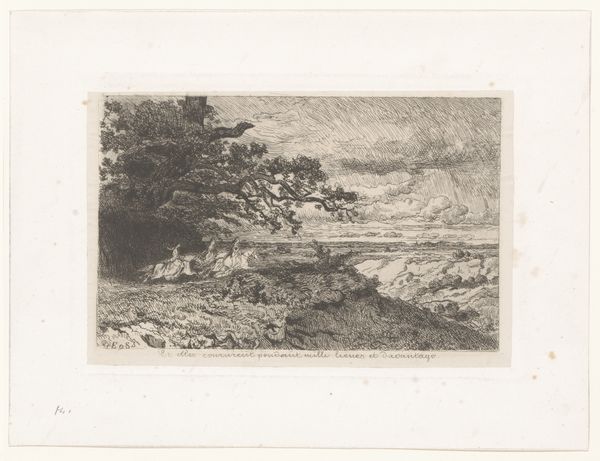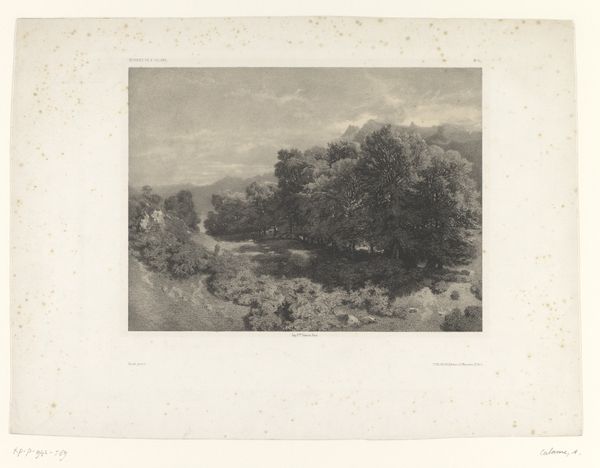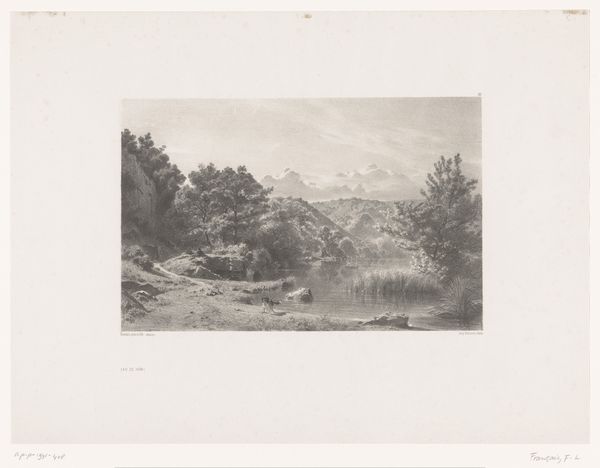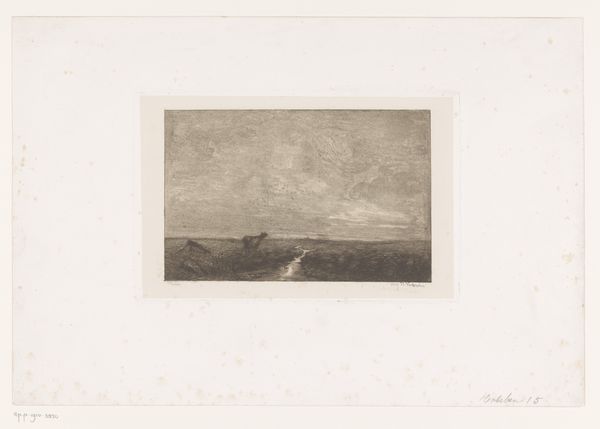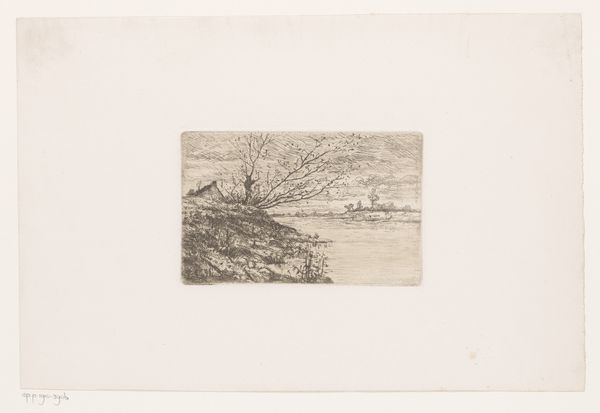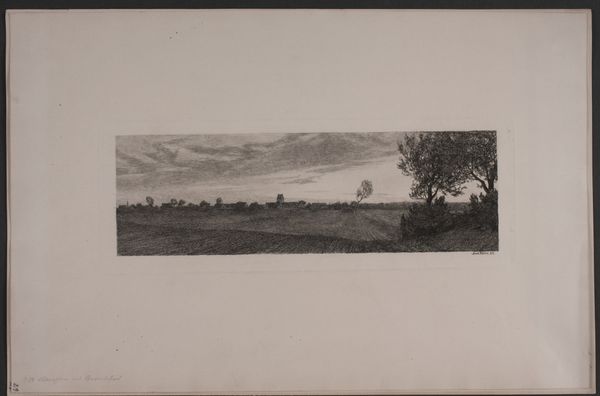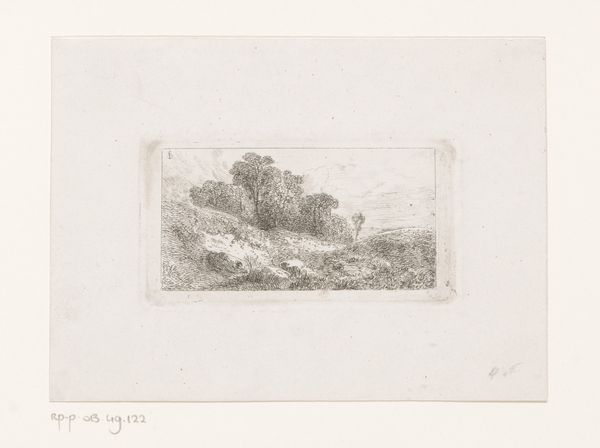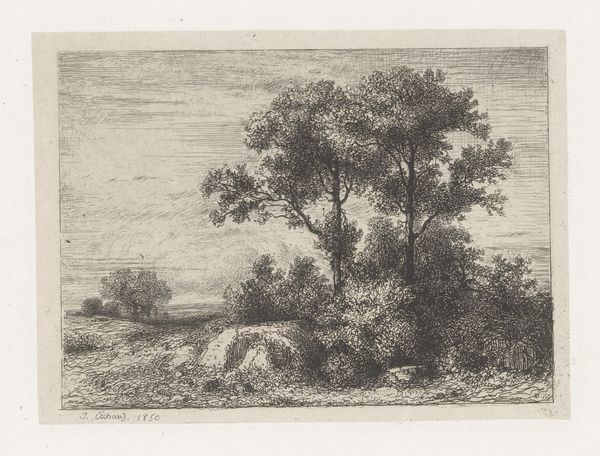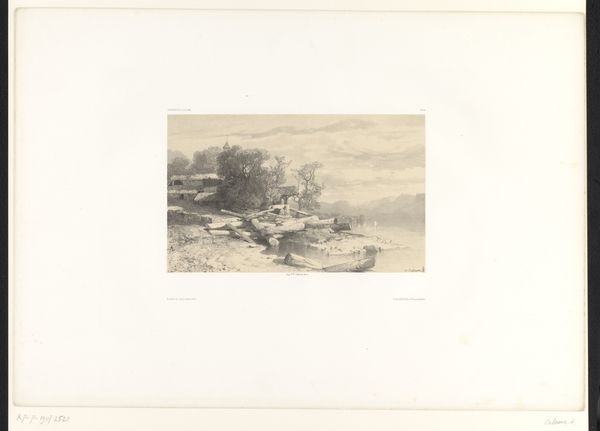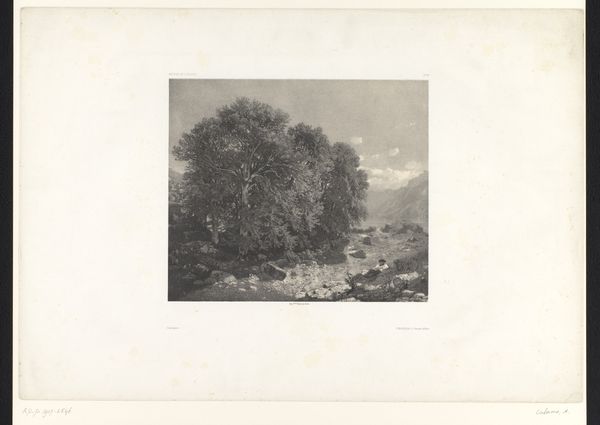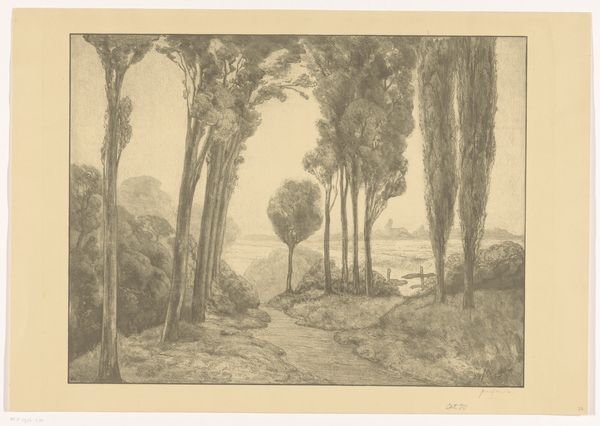
Dimensions: height 119 mm, width 186 mm
Copyright: Rijks Museum: Open Domain
Editor: So, this is Antoine Severin's "Landscape with Two Figures by a Ruin," a drawing from around 1851. It’s delicate, made with fine lines on paper, and there's something melancholic about the scene. What do you see in this piece? Curator: I see the ruin itself as a central figure in a dialogue about material endurance and decay. The etcher’s needle, a tool of precise incision, has transformed paper – a fragile, manufactured material – into a meditation on time’s impact. Consider the labor involved: the artist meticulously translating stone and foliage into a network of lines, each one a testament to a process. How does the printmaking medium itself influence your understanding of the landscape genre? Editor: I suppose I hadn’t thought about it that way. The printmaking adds another layer – it’s not just a depiction of a place, but also an object, crafted through a very specific, reproducible process. Does that undermine its originality somehow? Curator: Originality, in this context, becomes less about singular creation and more about how artistic labor intersects with industrial processes. The ability to reproduce the image speaks to changing modes of production and consumption in the mid-19th century. Does the relative affordability of prints democratize art, or commodify it? Editor: That makes me think about who had access to these kinds of images. Was Severin making art for wealthy patrons, or was this part of a larger shift towards making art more accessible to a wider audience? Curator: Exactly! By looking at the materiality of this work – the paper, the ink, the etched line – we begin to uncover a complex network of social and economic forces at play. The print participates in the circulation of images and ideas within a rapidly changing society. This perspective allows for an insightful investigation of landscape as a product influenced by manufacture, distribution, and ultimately consumption. Editor: I see, shifting focus from *what* is depicted to *how* and *why* it was made definitely gives a whole new dimension to interpreting the drawing! Thanks.
Comments
No comments
Be the first to comment and join the conversation on the ultimate creative platform.
